History of Revivalism in Boston
History of Revivalism in Boston
Resources for the urban pastor and community leader published by Emmanuel Gospel Center, Boston
Emmanuel Research Review reprint
Issue No. 24 — January/February 2007
by Rudy Mitchell, Senior Researcher, Emmanuel Gospel Center, Boston
Read the full version online here.
Executive Summary
“Revivalism,” according to the Dictionary of Christianity in America, “is the movement that promotes periodic spiritual intensity in church life, during which the unconverted come to Christ and the converted are shaken out of their spiritual lethargy.” David W. Bebbington, professor of history at the University of Stirling in Scotland and a distinguished visiting professor of history at Baylor University, describes revivalism as a strand of evangelicalism, a form of activism (which he identifies as one of evangelicalism’s four key characteristics), where a movement produces conversions “not in ones and twos but en masse.”
Dwight L. Moody revival meeting in Boston
In this 2007 study, EGC’s Senior Researcher Rudy Mitchell traces Boston’s key evangelistic revival movements from the First Great Awakening in Boston in 1740–1741 through the Billy Graham campaign in Boston, starting on New Year’s Eve in 1949. With 23,000 attending services on the Boston Common in 1740 to hear Whitefield (without the benefit of electronic amplification) to an estimated 75,000 gathered at the same spot in 1950 to hear the same Gospel preached by Rev. Billy Graham, the story of revivalism in Boston gives color and texture to the waves of revival.
Rudy introduces us to a few of the key players, remarkable crowds, recorded outcomes, while weaving in familiar faces and places, from Charles Finney, Dwight L. Moody and Billy Sunday to Harvard Yard, Park Street Church and the Boston Garden. We sense history coming alive as we read how God moved in remarkable ways through his gifted evangelists and preachers, and we gain a deeper appreciation for Boston’s vibrant Christian history.
“History of Revivalism in Boston” was first printed in the January/February 2007 issue of the Emmanuel Research Review, Issue 24. It was subsequently published in New England’s Book of Acts, a collection of reports on how God is growing the churches among many people groups and ethnic groups in Greater Boston and beyond.
Table of Contents (with key themes and names added)
First Great Awakening in Boston




What is the Quiet Revival? Fifty years ago, a church planting movement quietly took root in Boston. Since then, the number of churches within the city limits of Boston has nearly doubled. How did this happen? Is it really a revival? Why is it called "quiet?" EGC's senior writer, Steve Daman, gives us an overview of the Quiet Revival, suggests a definition, and points to areas for further study.